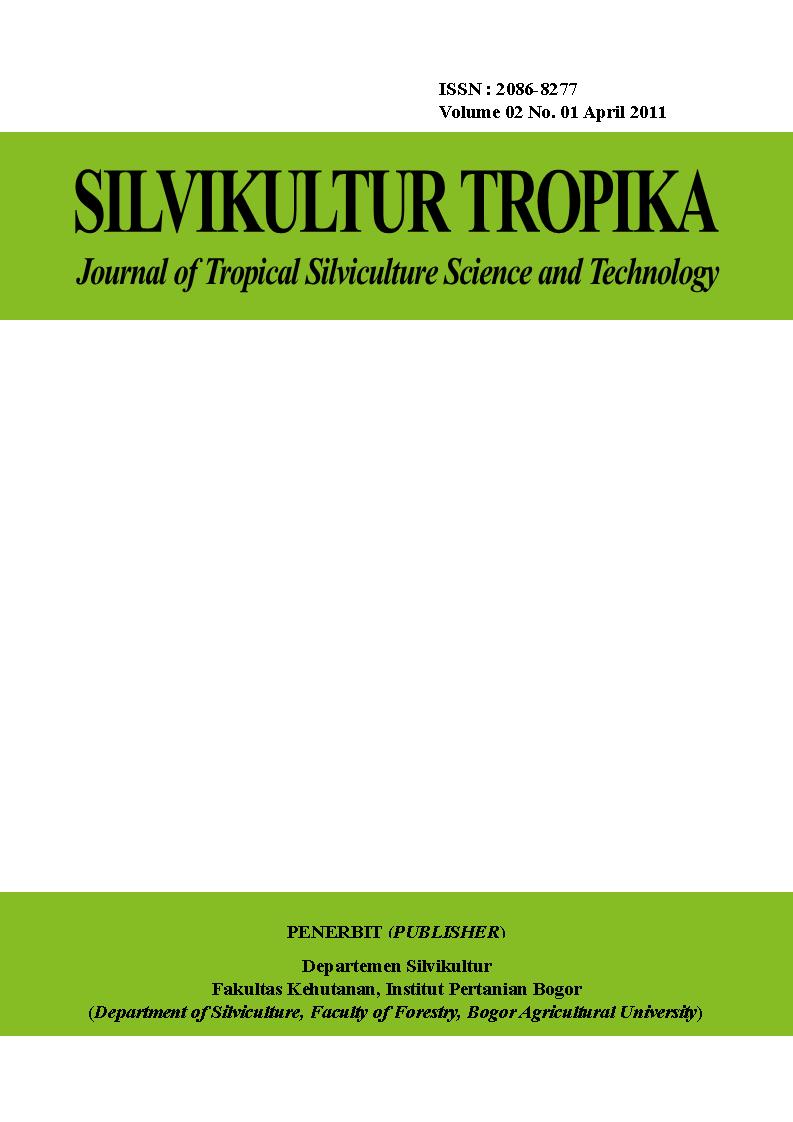Development of Boktor (Xystrocera festiva Pascoe) Larvae in Artifical Diet by Using Sengon (Paraserianthes falcataria) Powder
Abstract
At present, superiority possessed by sengon tree sppecies influences the development of monoculture plantation forest. However, constraint faced by monoculture of sengon tree is the high susceptibility of the sengon tree to attack by pest boktor (X. festiva Pascoe). This phenomenon requires effective and efficient pest control. Inefficient control of this pest was due among other things to lack of knowledge concerning insect boktor, particularly in the asppect of physiology and biology. In relation with this, research was conducted on pest boctor which were reproduced and observed in laboratory by using artificial food (artificial diet). The artificial food was made from sengon powder and other chemicals. If artificial food which contains powder of sengon wood and bark from a particular provenance is not preferred by boktor larvae, there is possibility that sengon tree of that provenance is resistant to attack by pest boktor. Theobjective of this research was for explaining the effect of sengon provenance and environmental condition on the development of boktor larvae. The benefit of this research was the gain of information concerning development pattern of boktor larvae and the technique for controlling this pest. The observed parameters were larvae weight, larvae length, diameter of larvae head and food weight which was consumed by boktor larvae. Measurement and change of food was conducted once in two weeks. Research results showed that factors of provenance, environmental condition and interaction between provenances did not give significant effect on all observation parameters, namely larvae weight, larva length, diameter of larva head, and weight of consumed larvae food in the form of bark powder or stem powder during five times observation for statistical test. The suitable composition of artificial diet was by using addition of pure cellulose as the main ingredients. Eating behavior of boktor larvae in artificial diet in the laboratory showed similar pattern with eating behavior of boktor larva in tree stem in the field.










